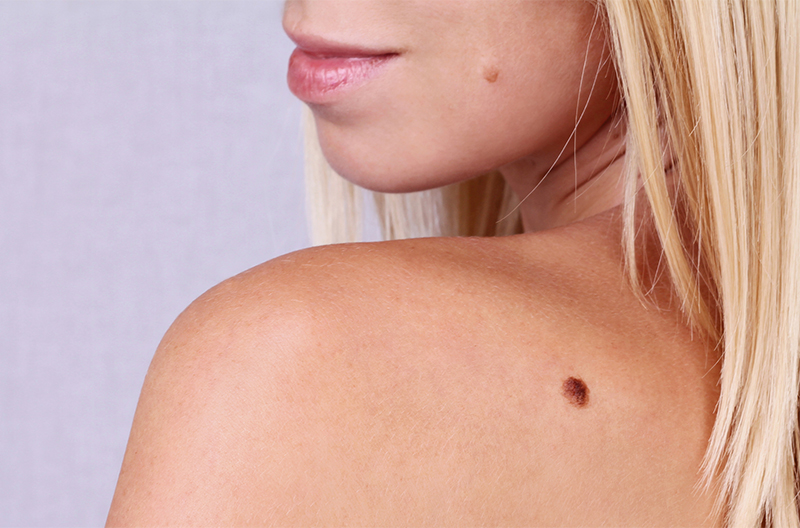Are you thinking about mole removal? If you have an unsightly one that’s bugging you like crazy, you may be looking for a solution. When it comes to how to get rid of moles, there’s a whole load of misinformation or fake news out there. Luckily, we’re here to guide you along the way and help you sort the fact from the fiction.
Within this guide, we will look at some of the dangerous myths about removing them, the signs of cancerous moles, medical procedures, and any associated costs. When you’re done, you should have a deeper understanding of what your options are. So, without further ado, let’s take a look at all you need to know about the world of mole removal.
What Are Moles?
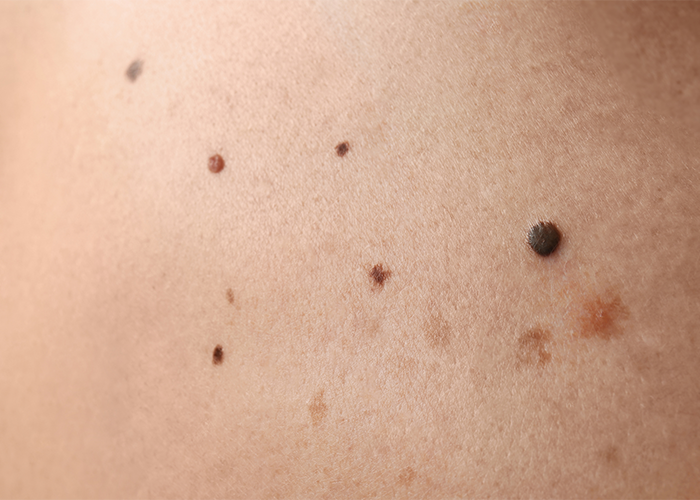
Before we get started, let’s deal with the basics. What are moles? There’s quite a straightforward answer here. Put simply, these things are small, colored dots that you find on your skin.[1] Most people tend to have moles in some place on their body. They are common on people’s arms, backs, and shoulders.
Of course, the amount you have, where they are, and how they look will vary. If you happen to have fair skin, you may find that you have more of them. It is estimated that those with light skin have between 10 and 40 moles on their body.[2] Don’t worry — this is completely normal.
It’s important to understand that moles can come in a range of shapes and sizes. They can be flat against the skin, a little raised, or even have hair growing out of them.[3] You can be born with moles or have them appear at some point — usually during childhood or your teens. Much of the time, these things are nothing to worry about, unless they suddenly undergo drastic changes in color, shape, or size.
Did you know adults with fair skin may have between 10 and 40 moles on their body?[4]
How Can You Tell The Difference Between Non-Cancerous and Skin Cancer Moles?
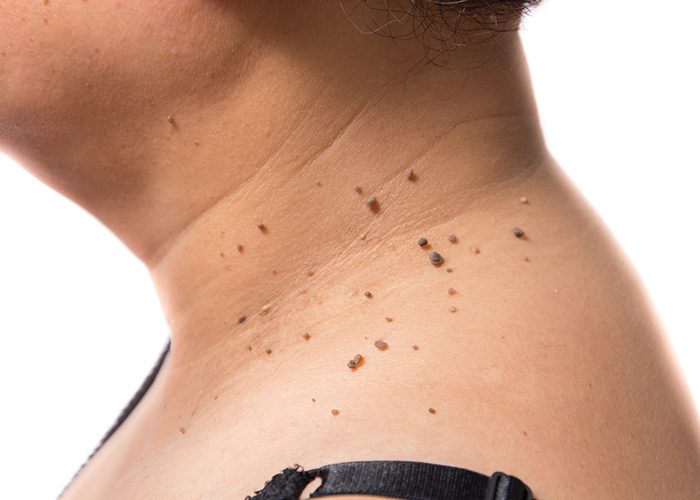
Each year, more Americans get diagnosed with skin cancer than any other form of cancer, according to the latest statistics.[5] Melanoma is a common type of skin cancer. Around 20-30% of melanoma cases are found in existing moles, while the rest are found on other areas of the skin.[6] If you’re worried about skin cancer moles, the best thing you can do is educate yourself about the symptoms of this illness.
Fact: Changes in the shape, size, and color of your moles could be a sign of skin cancer.[7] See a doctor for more information.
While most moles are harmless, you should always keep an eye out for cancerous ones. In some cases, these things can be a sign of melanoma. Looking for the signs of skin cancer moles on a regular basis is one of the smartest ways that you can protect your health. With that in mind, the NHS advises that you should consult with a medical professional if your mole:[8]
- Changes shape or has an uneven appearance
- Itches and starts to flake, crust, or bleed
- Changes color i.e. it gets darker or looks more colorful
- Begin to look raised
- Suddenly gets larger than it was
Should you notice these changes in a certain mole or, indeed, a group of them, you need to see a doctor. It may be that these are signs of skin cancer moles or that they are simply natural changes. Either way, it’s worth checking out this issue as soon as possible. If the doctor finds that you do have cancerous moles somewhere on your body, they will have a better chance of removing them early on. For that reason, you don’t want to put this off.
How to Perform Self-Exams on Your Moles
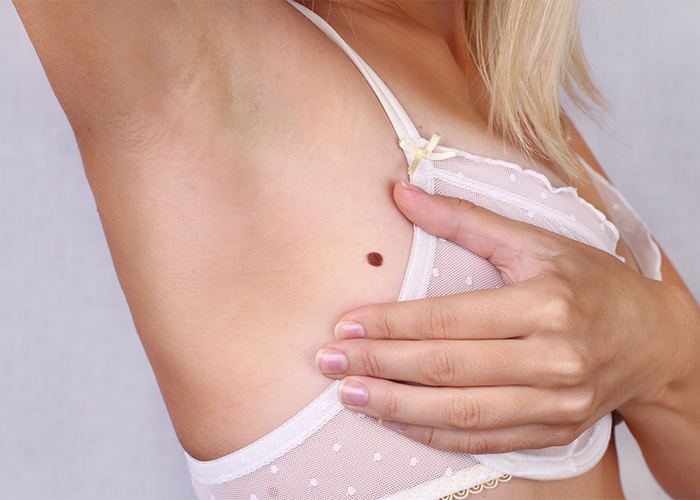
Don’t forget to stay on top of things! Another way in which you can protect yourself from skin cancer moles is to perform regular self-examinations. This process involves checking all areas of your skin for moles and any changes too. You can use a mirror to see awkward places, such as your back, and take a closer look at any red flags.
Should you notice any of the warning signs of skin cancer moles, it’s vital that you do something about them. Getting a checkup now could save you a whole load of trouble later on down the line. One way to see whether they are changing is to keep track of them. You can do so through a well-known process called mole mapping.
What is Mole Mapping?
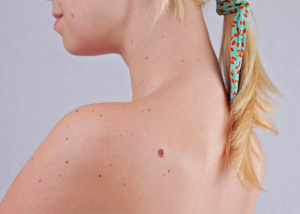
If you’re extremely concerned about your moles and feel that you have an excessive number of them, you might want to try mole mapping. This process means that you keep a record of the moles on your body so that you can track any significant changes. The American Academy of Dermatology has a Body Mole Map resource which you can use.[9] The downloadable PDF explains all there is to know about the process as well as giving some handy tips that will help you keep up to date with the method. Try it for yourself!
Skin Cancer Moles: What Are the Risk Factors
Aside from being as vigilant as possible when it comes to checking for cancerous moles, there are other ways in which you can protect yourself. Being aware of some of the risk factors ahead of time could mean that you can decrease your chances of getting diagnosed with melanoma. So, to give you an understanding of this area, The American Academy of Dermatology lists the following two factors of which you should be aware:[10]
1) The sun and UV damage
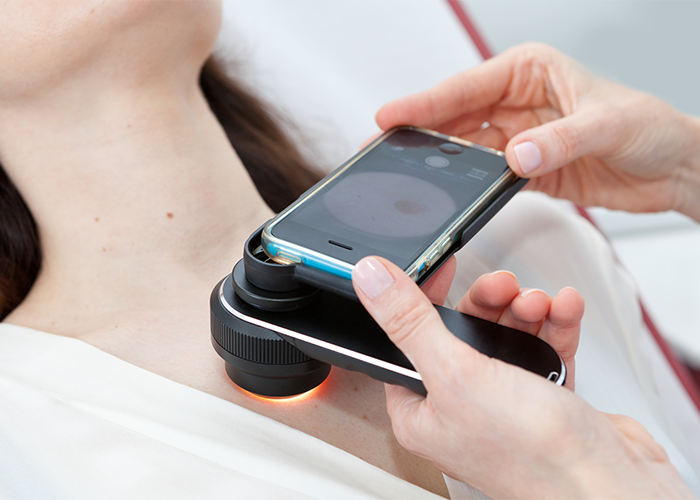
Exposure to the sun and UV rays may increase your chances of developing skin cancer moles. To protect yourself, you should make sure that you don’t stay in the sun for prolonged periods. You need to wear sunscreen whenever you expose your skin to the sun. You should avoid tanning beds and sun lamps, which may also cause cancer.
2) An excessive number of moles
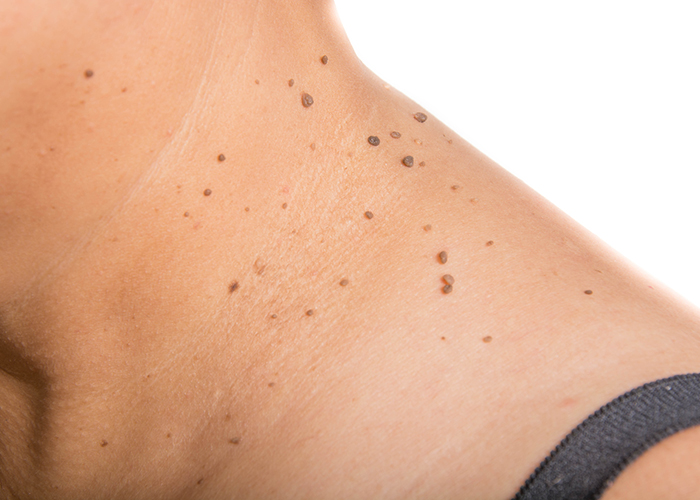
If you have more than 50 moles on your body, that could mean that you have a higher risk of developing skin cancer. In that case, it’s worth making sure that you monitor the situation and keep track of any significant changes. Should you feel that you need some extra support here, help is at hand. There are actually groups, such as Nevus, which you can join to get help and advice along the way.[11]
Fact: Sun damage can lead to cases of skin cancer in the long-run.[12] You should always protect yourself whenever you’re in direct daylight.
What You Need to Know About Mole Removal At Home
If you don’t have cancerous moles and simply don’t like the look of yours, you may consider mole removal. You can find a wealth of information on how to remove them online, but do you know what to trust? When you feel desperate to get rid of unsightly ones, you may want to try anything out there. However, doing so could have disastrous consequences. So much of the information is unsubstantiated and, frankly, perilous.
Dangerous Methods of Mole Removal At Home
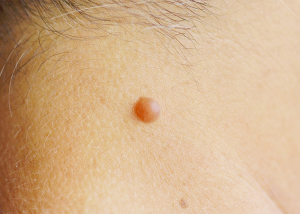
While there are loads of blogs and articles claiming to have the answer, the truth of the matter is that mole removal at home can be highly risky. Many of the home remedies could actually harm your body or leave lasting scars. For that reason, you need to avoid them at all costs. Some of the most dangerous claims that you may have seen include:
- Removing it using scissors or a knife
- Using a vinegar solution to “burn” it away
- Using iodine to kill it
Needless to say, these so-called mole removal solutions are unhealthy and not the way to go. For example, in attempting to “cut” your mole off your skin, you will not only cause yourself a great deal of pain, but also leave a scar. If you want to take care of your skin, you need to avoid this! Similarly, when it comes to using acidic solutions of removal, you need to be highly wary. These solutions could burn and hurt your skin.
Unfounded Methods of Mole Removal At Home

Of course, the above methods are not the only alleged ways in which you can get rid of your moles at home. There are a great many myths out there. However, what you need to keep in mind is that there’s a striking lack of evidence in this area. Many of the home remedies that you will find online are unfounded and have no scientific research to back them up. Here are some examples of such remedies:[13]
- Applying garlic to it
- Using tea tree oil
- Using flaxseed oil
- Putting banana peel on it
- Using aloe vera
- Using baking soda and castor oil paste
While these mole removal methods are not particularly dangerous, there is nothing to suggest that they will work. Of course, you can try them for yourself, but you should be aware that there is no evidence backing them up. That means that you may end up wasting your time here and becoming more and more frustrated in the process.
What About Mole Removal Creams?
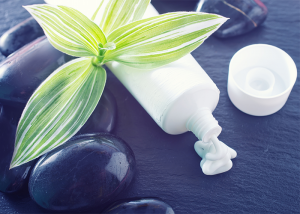
Now that you’ve got an understanding of home remedies for mole removal (and why you should avoid them), let’s talk about another method. There are many mole removal creams out there, all of which claim to help you get rid of the marks for good. So, do they really work and should you invest in some for you mole removal at home?
The short answer is no — and there’s a good reason for that. Much of the time, the directions on these products advise you to “scrape” or “shave” the mole before applying it. As we have already covered, trying to forcibly cut it out could lead to scarring and pain. Following this piece of advice is risky business, to say the least.
As though that weren’t enough of an issue, there’s also been some troubling research in this particular area. For instance, a group of studies found that some mole removal creams can lead to keloid development on the skin.[14] Keloid is the medical term given to a type of raised scar that typically grows larger than the wound it covers. In theory, that means that some of these creams could cause permanent damage to your skin.
On the other hand, if you’re set on using mole removal cream, there are some steps you can take to ensure that it’s as safe as possible. Consulting with a medical professional, such as a dermatologist, ahead of using any products is the best way forward. If you follow this golden rule, you should be able to get all the help, support, and advice you need.
How to Get Rid of Moles the Right Way: Body and Facial Mole Removal
Worried about a pesky mole? If you happen to have prominent ones, you might want to get rid of them medically. Be aware that this is a purely cosmetic procedure and not necessary if they’re not cancerous. Whether you’re thinking about facial mole removal or getting another type removed, you need to protect yourself. Here’s what you need to know to do just that.
1. Medical Mole Removal
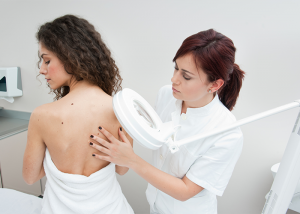
If you’re 100% sure that you’d like to have a mole removal procedure, it’s crucial that you speak to a dermatologist about the matter. There are two main types of mole removal that a doctor will perform — a surgical excision and a surgical shave.
The former is a process that involves the doctor cutting out the entire area of the mole. You may need to have stitches and allow for proper healing time. The latter type of removal is a process in which the doctor will numb the area and then shave the mole using a surgical blade. In most cases, you won’t need any stitches.
If you’re considering surgical mole removal, the easiest step you can take is to talk to your doctor. They will be able to give you help when it comes to which procedure suits you. You can also ask them for further details about the full removal process. During either of these procedures, you will also find that the doctor checks to see whether the mole is cancerous.
2. Safe Alternatives to Mole Removal
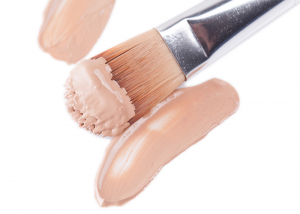
If a mole is not cancerous but you don’t like its appearance, there are some safe alternatives you can try. For example, you may want to use makeup, such as a pale concealer, to cover up the mark.
If you find that it has hairs growing out of it, you can quickly and easily use tweezers to pluck them and get rid of them. Doing so is completely safe so long as you don’t damage the skin in the process.
Mole Removal Cost: How Expensive is It?
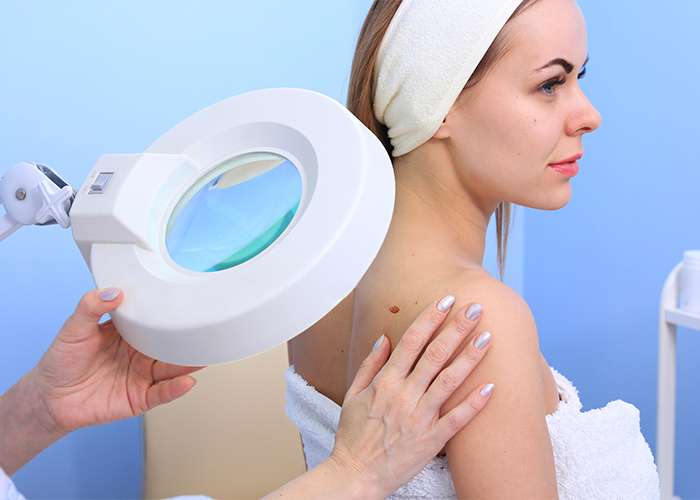
Before you go ahead with the mole removal procedure, there’s one thing that you need to know. How much should you pay? Once you start looking at various clinics, you will see that mole removal cost can vary drastically. That’s why it’s important you shop around.
Most procedures will cost between $150 and $400, according to an online survey.[15] However, the type of surgery you have will influence the overall cost of the process. You should discuss the pricing with your doctor before agreeing to have the procedure. After all, you don’t want any nasty surprises when you get the bill.
You should also be aware of any additional costs that are associated with this procedure. For example, if your doctor runs checks to see if you have skin cancer moles, they may have to send samples to a lab. In this instance, you could find that you have to pay extra charges for the tests. Again, you should talk to your doctor about these costs first.
Are you on a budget? If you’re looking to save some money, you could go to a teaching hospital or clinic. Since mole removal is a pretty simple procedure, you may find that a physician-in-training can carry it out. While this may mean that the surgery takes longer, it is usually overseen by a qualified physician. That means that you should have no problems throughout the process. Talk to a medical professional about this option.
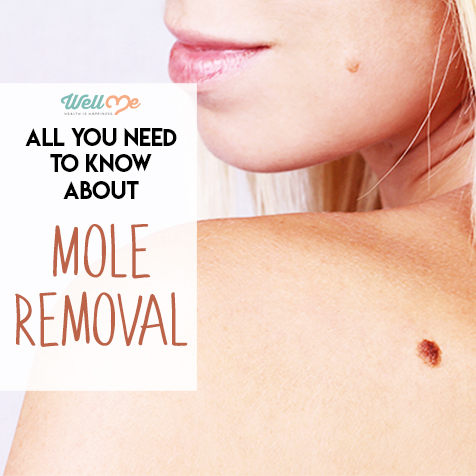
Conclusion
Now that you know all there is to know about
mole removal, it’s time to take some action. If you’ve decided that you do want
to undergo a procedure, it’s worth checking out your option and figuring out
what works for you and your budget. Alternately, should you find that the mole
is not cancerous and doesn’t bother you too much, you could leave it be.
There’s no medical reason to have these benign moles removed. Make sure you
consider all your options before you make a decision.
References
- [1] https://www.nhs.uk/conditions/moles
- [2] https://www.aad.org/public/diseases/bumps-and-growths/moles
- [3] https://www.nhs.uk/conditions/moles
- [4] https://www.aad.org/public/diseases/bumps-and-growths/moles
- [5] https://www.skincancer.org/skin-cancer-information/skin-cancer-facts
- [6] https://www.skincancer.org/skin-cancer-information/skin-cancer-facts
- [7] https://www.nhs.uk/conditions/moles
- [8] https://www.nhs.uk/conditions/moles
- [9] https://www.aad.org/public/diseases/bumps-and-growths/moles#tips
- [10] https://www.aad.org/public/diseases/bumps-and-growths/moles#tips
- [11] https://www.nevus.org
- [12] https://www.aad.org/public/diseases/bumps-and-growths/moles#tips
- [13] https://askdrnandi.com/17-natural-remedies-for-removing-moles-warts-skin-tags-more
- [14] https://www.ncbi.nlm.nih.gov/pubmed/?term=mole+removal+creams
- [15] https://health.costhelper.com/mole-removal.html

